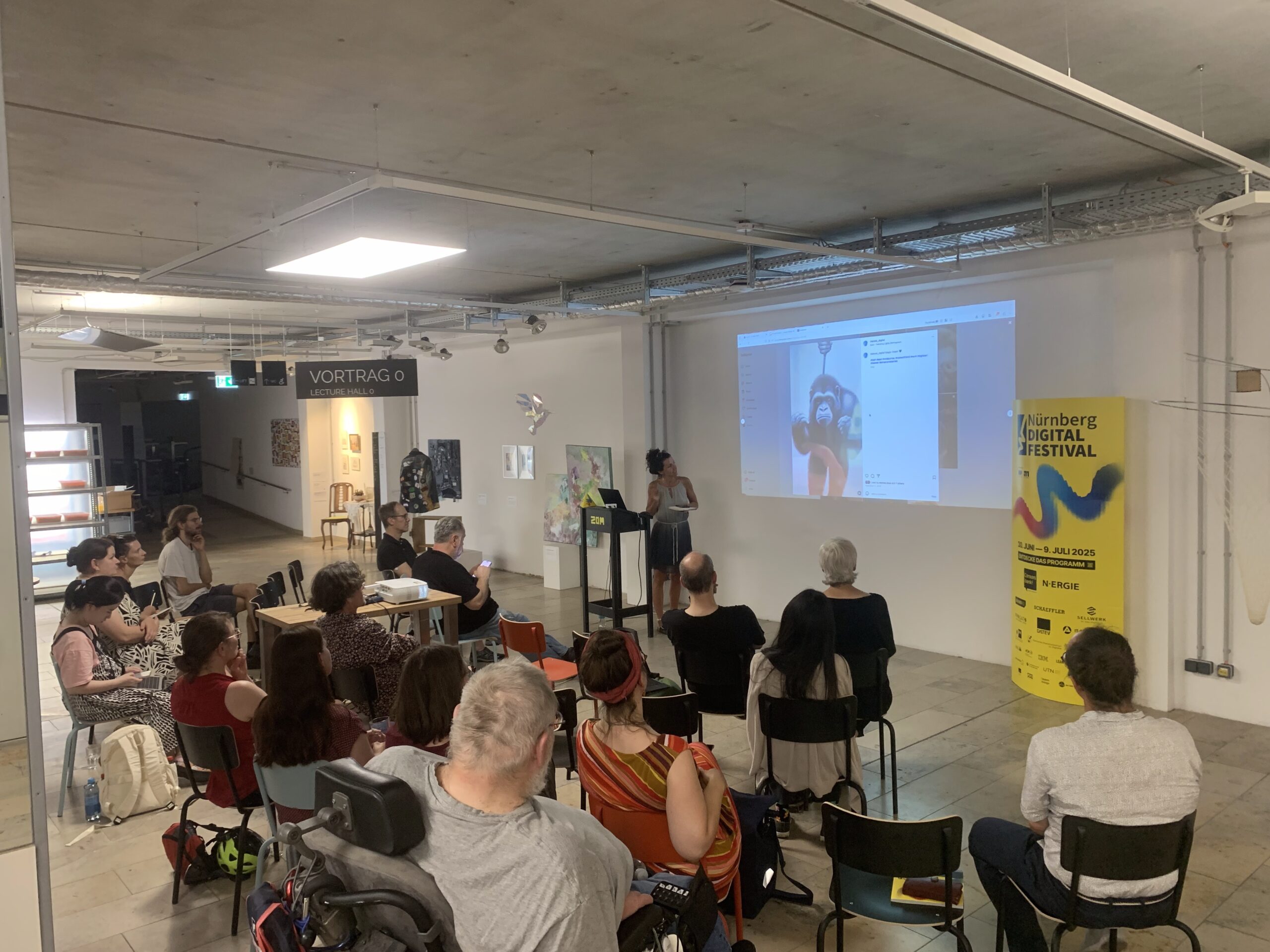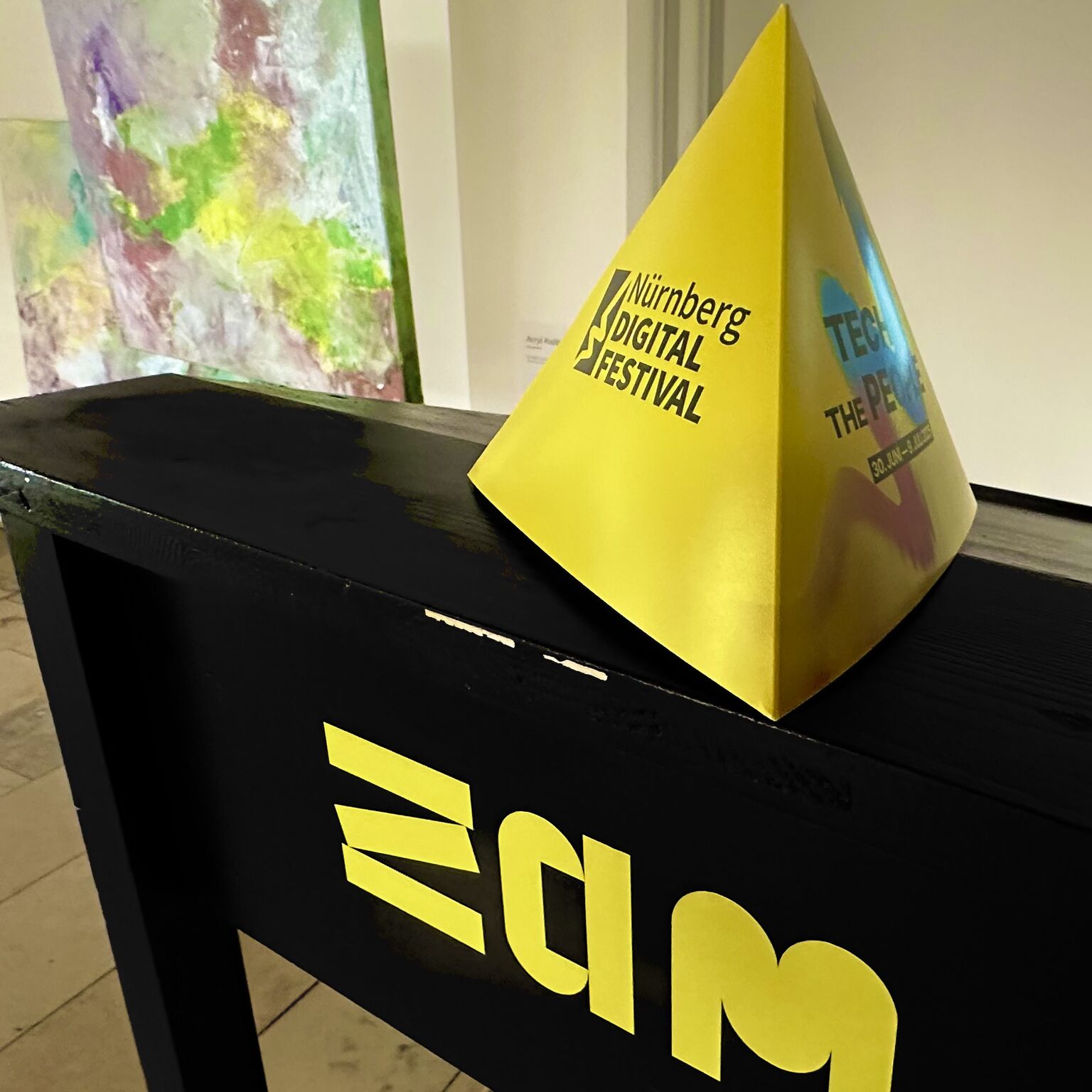As part of the Nuremberg Digital Festival, ZAM invited participants to explore copyright law, including current upheavals and uncertainties. About 15 participants engaged in intensive discussions on art, law and other social issues with the three initiators, artist Anna Maria Bieniek, stenographer and technical director of ZAM Jochen Hunger, and lawyer Baltasar Cevc. The event is intended to kick off a series on AI and society at ZAM.

Three perspectives on AI
Jochen Hunger—AI as a creative tool
Jochen Hunger, artistic director of ZAM and freelance scenographer, reported on an exhibition at the Deutsches Museum, in which his team used AI software to design visual worlds for various future scenarios. The focus was not only on the technical possibilities of image generation, but also on how AI is changing creative work processes.
He expressed concerns that the use of such tools will increasingly lead to creative work—such as illustration—being handed over to automated systems. This not only has an impact on the career prospects of designers, but also on our collective visual language: recurring patterns in AI-generated images could shape our imagination in the long term. Is that a good thing? Is it problematic? Nevertheless, for him, the opportunities outweigh the risks: AI makes creative work faster and more accessible.
Anna Maria Bieniek—Artistic play with AI
Anna Maria is an artist who deliberately integrates AI-generated images into her artistic work. Out of pure curiosity, she began conducting her first image experiments with AI—she had no previous experience with the technology. At the beginning of her work, she noticed the typical errors in the generated images: anatomical inaccuracies, distorted perspectives or strange details. However, she did not perceive these imperfections as flaws, but rather as appealing, aesthetically interesting elements that she deliberately incorporated into her works.
She finds the possibility of using AI to create objects that would be impossible in the real world particularly exciting—such as a sneaker with a surface made of strawberry skin. She deliberately uses such surreal combinations as an artistic stylistic device.
With each work, Anna Maria reflects on how much of it is ‘herself’ and how much is thanks to AI. For works that she continues to edit analogously after generation, she considers herself 100% the creator. For other images, where the AI plays an unexpectedly strong creative role through its own suggestions, she assigns herself a smaller share—sometimes only about 50%.
Baltasar Cevc—legal questions and grey areas
Baltasar Cevc, lawyer and ZAM board member, shed light on the current legal situation, focusing on two perspectives:
- As an artist, I want to use AI to create works of art.
- As a company, I want to train my AI using existing works.
This raises many unanswered questions:
- Can I instruct AI to generate an image ‘in the style of XY’?
- Is it permissible to use AI-generated images commercially if they are based on protected works?
- How can I protect my own works from being used as training material without my permission?
International differences play a major role here. In the US, the ‘fair use’ doctrine may allow transformative use. In the EU, training, especially for pattern recognition, is permitted as ‘text and data mining’ (TDM) under certain conditions.
But that doesn’t answer the question: ‘Who is really the author of an AI-generated work?’
Discussion
After the presentations, everyone present continued the discussion—openly, controversially and in a variety of ways. Additional topics were raised, including:
- Use of AI images in marketing—what is permitted?
- How must AI systems be developed in the future to protect authors?
- The enormous resource consumption of large AI models
Outlook
This round was the start of a series of AI-themed events at ZAM. Further events will follow, providing space for exchange, critical questions and new perspectives.
👉 Stay tuned—and come visit us at ZAM – Zentrum für Austausch und Machen (Centre for Exchange and Making).
Text: Conrad Hesse, Baltasar Cevc, also using ChatGPT
